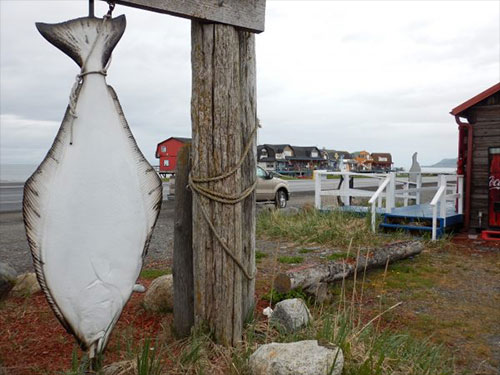
Study: Halibut charters adapt to economics and regulationsBy LAUREN FRISCH
June 22, 2017
The study, published in the journal PLOS ONE, highlights the importance of understanding how economics and regulations may affect fishing locations or species preferences in recreational fisheries.
College of Fisheries and Ocean Sciences doctoral student Maggie Chan and professor Anne Beaudreau studied how charter fishing locations outside of Homer and Sitka have changed since the 1990s. The analysis is one piece of a larger effort to understand how external factors influence fishing behavior and opportunities. The researchers interviewed charter fishermen in Homer and Sitka to learn about where they fish, what they fish and how this has changed over time. Fishermen were given a map for every decade in which they had fished and were asked to identify general areas they used. Individual maps were combined to visualize changes across decades. “Our main goal was to identify any big shifts in where fishermen were going,” Chan said. The researchers found an individual’s motivations for changing locations were often intertwined with fishing regulations and socioeconomic variables that were outside of a fisherman’s control. Since the early 1990s, charter fishermen in Homer have consistently traveled about 10 times farther to their fishing spots than Sitka fishermen. This was in part because traveling farther allowed the fishermen to also target salmon, rockfish and lingcod. When fuel prices increased in the early 2000s, though, some charter fishermen started fishing closer to home. In contrast, Sitka fishermen changed locations primarily because of a new regulation. In 1999, a Local Area Management Plan eliminated charter and commercial fishing in Sitka Sound during summer months. This new regulation forced charter fishermen to travel 25 miles or more to catch halibut, even though population numbers in the sound were high. The study results suggest managers should consider a more holistic approach, such as multispecies regulations, rather than regulating individual species, Chan said. Single-species management limits the ability to consider how changes for one species might affect other species or habitats. “It is critical for charter fishermen to be able to adapt in the face of a changing regulatory landscape and environmental change,” Chan said. “This is clear in the examples of charter fishermen in both Sitka and Homer who have differentially responded to changes that have occurred at the local level.” Chan said multispecies or ecosystem-based management would better evaluate the full context of a new regulation, which may better account for how charter fishermen are likely to adapt to local change.
Representations of fact and opinions in comments posted are solely those of the individual posters and do not represent the opinions of Sitnews.
|
||||
